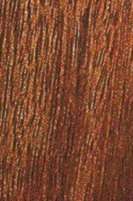 
Hareri (Terminalia prunioides)
Family: Combretaceae
Common names: Hareri, Musangano, Mutau, Mutoo, Mwal-ambe, Mwanga, Mwangati, Mwangati-punda, Purple pod terminalia, Sterkbos
Distributed in: Kenya, Mozambique, Namibia, Tanzania, Zambia, Zimbabwe (Africa)
Common uses: Agricultural implements, Boat building (general), Flooring: industrial heavy traffic, Handles: general, Heavy construction, Ladders, Light construction, Mine timbers, Piling, Railroad ties, Sporting Goods, Toys, Turnery, Vehicle parts
Tree size: Tree height is 30-40 m
Colors: the heart isYellow, Yellow to golden-yellow to orangeand the sapwoodPaler than heartwood, Yellow.The grain isWavy, the textureMediumand the lusterMedium
Natural durability: Susceptible to attack from powder post (Lyctid & Bostrychid) beetles, Very durable
Odor: Has an odor
Silica Content: Siliceous
Drying Defects: Severe end splitting, Severe surface checking
Ease of Drying: Variable
Tree Identification: Bole/stem form is straight
Blunting Effect: Moderate
Boring: Fairly difficult to very difficult
Carving: Fairly Difficult to Very Difficult
Cutting Resistance: Easy to saw
Gluing: Fair to Good Results
Mortising: Fairly Difficult to Very Difficult
Moulding: Fairly Difficult to Very Difficult
Movement in Service: Fairly Difficult to Very Difficult
Nailing: Possible if prebored, Pre-Boring Recommended
Planing: Planes to a poor finish
Resistance to Impregnation: Resistant sapwood
Response to hand tools: Responds Poorly
Routing recessing: Fairly Difficult to Very Difficult
Steam bending: Fair to Good Results
Turning: Fairly Difficult to Very Difficult
Polishing: Good;
- Numerical data Metric
- Numerical data English
- Strength properties
- References
 |
 |
 |
 |
| Item |
Green |
Dry |
Metric |
| Specific Gravity |
|
|
|
| Density |
|
1041 |
kg/m3 |
| Bending Strength |
954 |
1473 |
kg/cm2 |
| Crushing Strength |
485 |
699 |
kg/cm2 |
| Hardness |
|
|
kg |
| Impact Strength |
|
|
cm |
| Shearing Strength |
|
200 |
kg/cm2 |
| Stiffness |
152 |
175 |
1000 kg/cm2 |
| Tangential Shrinkage |
|
|
% |
| Radial Shrinkage |
5 |
|
% |
| Weight |
1025 |
897 |
kg/m3 |
| Maximum Load |
|
|
cm-kg/cm3 |
| Toughness |
|
|
cm-kg |
| Static Bending |
|
|
kg/cm2 |
|
 |  |  |  | | Item | Green | Dry | English | | Bending Strength | 13576 | 20956 | psi | | Density | | 65 | lbs/ft3 | | Maximum Crushing Strength | 6899 | 9945 | psi | | Shearing Strength | | 2847 | psi | | Stiffness | 2167 | 2494 | 1000 psi | | Weight | 64 | 56 | lbs/ft3 | | Radial Shrinkage | 5 | | % | | Tangential Shrinkage | 9 | | % | |
Shrinkage, Tangential = fairly large
Shrinkage, Radial = fairly large
Shearing strength (parallel to grain) = high
Modulus of Elasticity (stiffness) = high
Max. crushing strength = high
Density (dry weight) = >75 lbs/cu. ft
Bending strength (MOR) = high
Shrinkage, Tangential = moderate
Shrinkage, Tangential = large
Shrinkage, Radial = moderate
Shrinkage, Radial = large
Density (dry weight) = 67-75 lbs/cu.ft
Density (dry weight) = 61-67 lbs/cu. ft
Bolza, E., Keating, W.G.,1972,African Timbers - the Properties, Uses and Characteristics of 700 Species,C.S.I.R.O. Div. of Building ResearchDale, I.R., Greenway, P.J.,1961,Kenya Trees and Shrubs,Buchanans Kenya Estates Ltd. Nairobi Hatchards LondonWimbush, S.H.,1950,Catalogue of Kenya Timbers,Govt. Printer Nairobi Kenya
|









